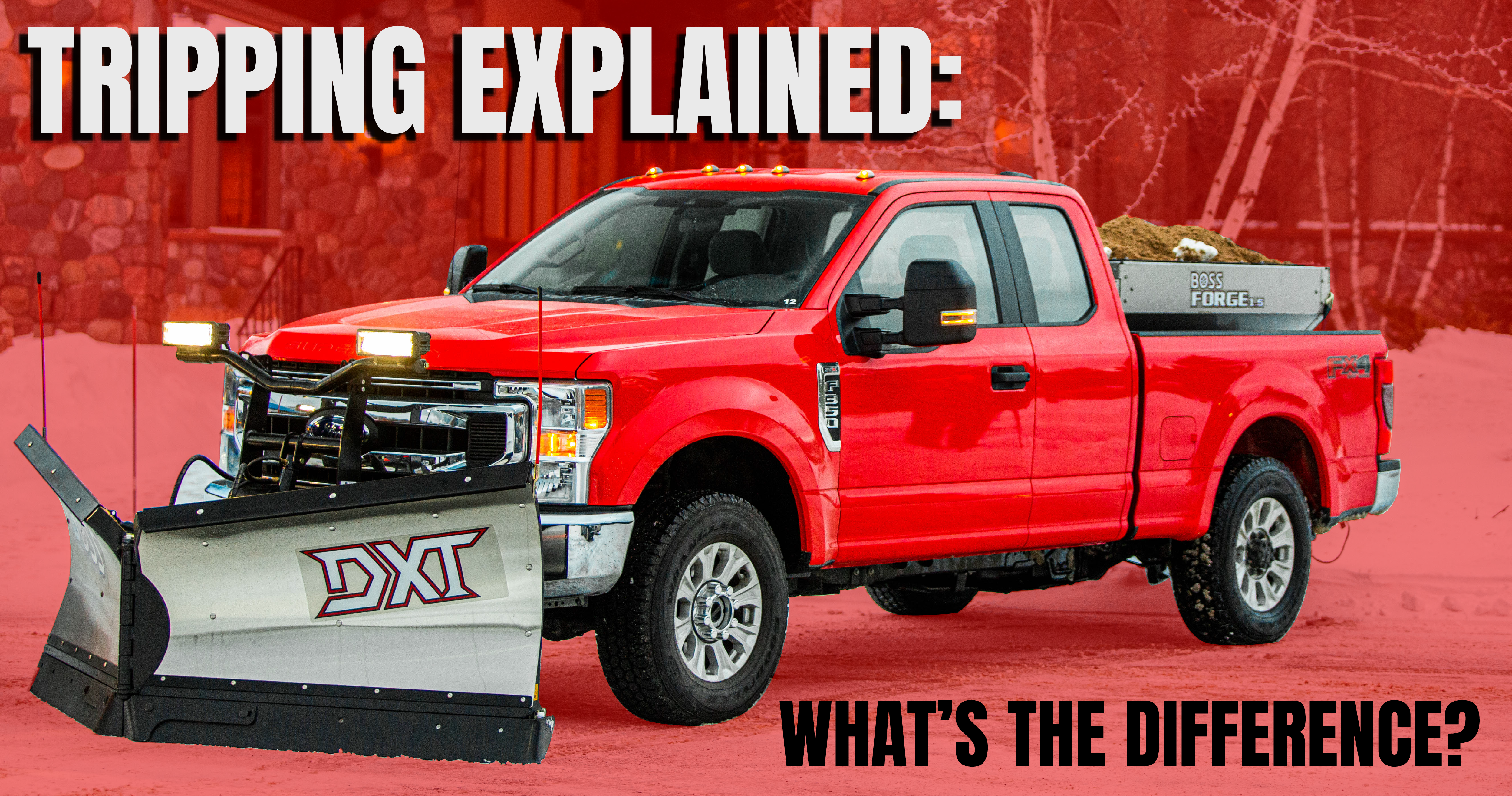
As you plow snow, you must have obstacles and obstructions in mind. Tripping systems give you peace of mind so that you and your equipment bear less impact in the event that you hit any obstructions. Blade tripping is defined as the rotational movement of an element of the snowplow blade system in reaction to impacting an obstacle. The purpose of a blade tripping system is to protect the snowplow and vehicle in the event of excessive force that could damage the snowplow or truck. The trip edge acts as a cushion and absorbs impact before it can get to the vehicle or you, the operator.
The trip edge technology comprises two products that help reduce the energy of impact. These are the tripping mechanism and pressure relief valves. The pressure relief valves use hydraulic cylinders to absorb some of the energy produced by the impact. These two products provide substantial protection during the snow removal process.
Some features that are provided on trip edge truck plows include tripping moldboards and tripping cutting edges. These features are included to provide as much protection as possible when the force of obstacles meets the plow. The tripping moldboard helps the entire blade to trip forward when obstacles are encountered to protect the truck and plow from damage. V-plows are designed with full moldboard tripping technology, designed to trip in any position. To help you take on the snow.
There are three types of tripping systems that BOSS Snowplows utilize. Read on to learn the differences between each, helping you decide what type is right for you.
Trip-edge
Much like all other tripping systems, the trip-edge helps reduce the impact on your plow if you hit anything smaller than 6-inches high. Some of these instances may include but are not limited to:
- Manhole covers
- Large cracks in pavement
- Speed Bumps
As the base angle of the trip-edge hits any hidden obstructions, the edge of the plow trips to “give way” to the object. Taking any additional force off the entire plow. This puts less impact on you, your truck, and the plow. The trip-edge technology is designed and engineered to power through even the toughest of snowstorms and any obstacles you may encounter.
Trip edge snowplows feature an extra-rigid moldboard and trip edge technology, so you won’t lose the load you’re pushing. They also feature trip return springs offered in steel and stainless steel for pickup truck applications. The tension on these springs can be customized for any job at hand.
Full Trip
This heavy-duty plow can get the job done while reducing the impact on you and your equipment. Full moldboard trip snowplows can hit objects taller than 6-inches. Some of these instances may include but are not limited to:
- Curbs
- Storm Drains
- Frozen snowbanks
The full trip system means the entire moldboard trips forward, cushioning the impact and helping to reduce the force on your plow and truck. The full trip moldboard helps to shield your equipment so that you can continue to take on the snow. Some plows that feature this tripping system include the BOSS V XT and Super-Duty plows. The BOSS V XT plows feature flared blade wings with an enhanced flare design to help throw snow higher and further. Super-Duty plows are reliable and robust to help take on winter storms. With increased rigidity and durability, this straight blade plow will never disappoint.
Dual Trip
BOSS Snowplow is the only company to offer a dual-trip DXT plow. Gives you the features of both the trip-edge and full trip systems. Creating dual trip protection, the DXT plow is designed with both the trip edge and full moldboard trip technology. DXT Plows come installed with a heavy-duty trip edge base, serving as the plows cutting edge until the recommended wear point. Once the DXT trip edge is worn down to the recommended wear point, a new, replacement cutting edge should be bolted on and used as the wear edge. The dual trip system combines cutting-edge designs to give high and low trip protection when taking on the heaviest snowstorms. The dual trip design protects you from obstacles like manhole covers to frozen snowbanks.

